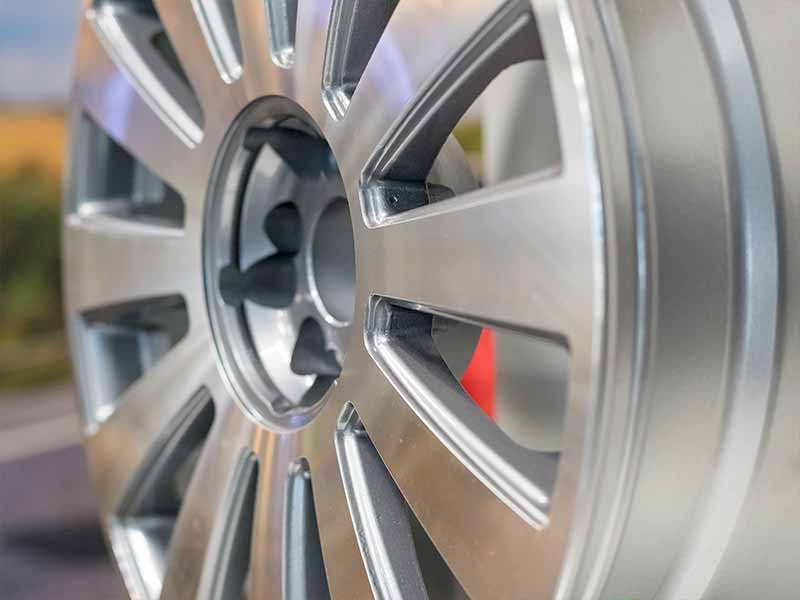Have you ever stopped to wonder about the wheels on your car? Sure, they get you from place to place, but there’s so much more to them than just spinning around! Each part of a car wheel is a marvel of engineering, crafted with precision and serving a unique purpose.
Parts Of A Car Wheel
- Rim
- Bolt Circle
- Centerbore
- Lug Holes
- Spokes
- Valve Stem Opening
- Outboard and Inboard Flanges
- Drop Center
- Bead Rests
- Mounting Humps
- Lip
In this article, we’ll explore the different parts of a car wheel, from the outer rim to the inner workings. We’ll discuss components like the bolt circle, centerbore, spokes, and more. We’ll also delve into the differences between types of wheels such as forged and cast wheels, as well as one-piece, two-piece, and three-piece wheels.
Let’s take a closer look.
Understanding the Parts of a Car Wheel
Rolling into the world of car wheels might feel a bit like trying to navigate a maze at first, but don’t worry! Each part of a wheel has its own job in keeping your car moving smoothly.
Just like a soccer team, every component plays a crucial role and works together to score the goal – in this case, getting you safely from point A to point B.
The Rim
Picture a bicycle wheel in your head. That metal edge where the rubber tire gets attached? That’s pretty much what a rim is. In a car wheel, the rim is the outer edge of the wheel that holds the tire in place. It’s like a firm handshake between your tire and wheel – it makes sure the tire stays put, whether you’re cruising on a smooth highway or bouncing on a bumpy off-road trail.
Bolt Circle and Lug Holes
Ever notice those round holes on your car’s wheel? Those are called lug holes, and they’re part of a larger pattern known as the bolt circle. Imagine playing connect-the-dots with the lug holes, and you’d end up with a perfect circle. This bolt circle is super important because it needs to match up with the lug pattern on your car’s axle. It’s like puzzle pieces – if they don’t fit together, your wheel won’t attach properly. And we all know a wheel that’s not attached properly is a recipe for disaster!
The Centerbore
The centerbore is the big hole right in the middle of your wheel. But it’s not just there for looks – it plays a key role in keeping your wheel balanced while you’re driving. Think of it as the bullseye on a dartboard – it’s the exact center of your wheel, and it fits onto a hub on your car’s axle. When everything lines up just right, your wheel spins smoothly, and you get a vibration-free ride.
Spokes
You know those lines or bars that stretch from the center of the wheel to the rim? Those are the spokes. They’re not just there to look cool (although they do) – they actually help distribute the weight of the car across the wheel. Imagine a circus performer spinning plates on sticks. The spokes are like those sticks, spreading out the force so the plate (or in this case, the wheel) doesn’t collapse under pressure.
Valve Stem Opening
The valve stem opening is a small hole on the rim of your wheel, and it’s the gateway to your tire’s air supply. It’s where you connect the air pump when you need to inflate your tire. Think of it like the straw in your drink – it’s how you add or remove something important (in this case, air instead of a delicious beverage).
Outboard and Inboard Flanges
Last but not least, we have the outboard and inboard flanges. These are the raised edges on both sides of the rim that help keep the tire from sliding off. Picture a sandwich – the bread (flanges) keeps everything (the tire) in place, so your fillings (air) don’t fall out!
Anatomy of the Inner Wheel
The inner wheel might be hidden from view, but it’s just as important as the parts you can see. Think of it like the backstage crew at a concert – they might not be in the spotlight, but without them, the show couldn’t go on.
Drop Center
The drop center of a wheel is like a hidden secret agent in a spy movie. It’s a specially designed dip in the middle of the wheel, right between the two flanges. You might think, “Why would a wheel need a dip?” Well, when you’re fitting a tire onto the wheel, this little dip provides extra space so the tire can stretch and fit snugly onto the wheel. It’s like a bit of extra stretch in your favorite pair of jeans, making them easier to pull on!
Bead Rests and Mounting Humps
The bead rests and mounting humps are like the tire’s best friends, always there to support it and keep it in place. They’re located on the inner part of the wheel, where the tire sits.
The bead of the tire is its inner edge, and it needs to rest somewhere, right? That’s where the bead rests come in. They’re like comfy beds where the tire bead can sit, making sure the tire seals properly against the wheel.
Mounting humps, on the other hand, are little raised sections on the bead seat that work like safety barriers. They prevent the tire from shifting or moving too much, especially when you’re taking those sharp turns at speed. Imagine them as tiny speed bumps keeping your tire in check!
The Lip
The lip of the wheel is the very outer edge of the wheel where it meets the tire. It’s like the brim of a hat, sticking out just a bit. The lip plays an important role because it helps hold the tire in place and creates a seal so that no air escapes. Plus, it often adds a bit of style to the wheel. It might not be as flashy as the spokes, but it’s just as important!
Types of Wheels
There’s a variety of wheel types to choose from, each with its own unique features and benefits. From forged to cast wheels, from one-piece to three-piece designs, there’s a perfect fit for every car and every driver.
Forged Wheels vs. Cast Wheels
When it comes to making wheels, there are a couple of main methods: forging and casting. It’s kind of like baking cookies – you can make them from scratch (forging), or you can use pre-made dough (casting). Each method has its own advantages and disadvantages.
Forged wheels are like the homemade cookies of the wheel world. They’re made by taking a solid piece of metal and applying a whole lot of heat and pressure to shape it into a wheel. This makes them super strong and durable, but it also makes them more expensive.
Cast wheels, on the other hand, are made by pouring molten metal into a mold that’s shaped like a wheel. It’s a quicker and easier process, so these wheels are usually more affordable. But just like those pre-made cookies, they might not be quite as strong or durable as their homemade counterparts.
One-Piece, Two-Piece, and Three-Piece Wheels
Now, let’s talk about how many “pieces” a wheel can be made of. Just like a puzzle can have lots of pieces, so can a wheel.
One-piece wheels are the simplest. They’re made of a single piece of metal, and everything – the center, the spokes, and the rim – is all one unit. They’re like a one-piece swimsuit, simple and streamlined.
Two-piece wheels are a little more complex. They’re made of two separate parts: the center and the rim. This means they can be customized a bit more, and if one part gets damaged, you might not have to replace the whole wheel.
Three-piece wheels take it a step further. They have a separate center, and the rim is split into two parts: the inner rim and the outer rim. This gives them even more customization options, but it also means they’re more complicated to make (and usually more expensive).
Resources
Below are some links you may find helpful when learning about tires
Final Thoughts
Just like we discovered at the beginning, each part of a car wheel is truly a marvel of engineering. From the outer rim to the drop center, from the bead rests to the valve stem opening, each part plays a pivotal role, just like the cogs in a well-oiled machine.
Wheels are far more than just round objects that spin. They are complex systems where every piece matters and works in harmony to keep you safe and moving on the road. Understanding these parts is like appreciating the individual instruments in a symphony orchestra – each adds its own unique note to the overall performance.
Good luck and happy motoring.





